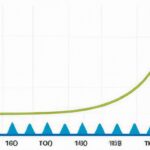Many different ways exist to measure income inequality besides the widely used Gini coefficient. Alternative measures include the Palma ratio, 20/20 ratio, and Theil index. These metrics provide a broader understanding of income distribution within a society. The Palma ratio focuses on the income share of the top 10% compared to the bottom 40%. The 20/20 ratio calculates the income share of the top 20% against the bottom 20%. The Theil index measures both within-country and global income inequality. By incorporating these alternative measures, policymakers and researchers can gain deeper insights into income inequality dynamics.
Table of Contents
- Critiques of traditional measures
- Definition of income inequality
- Examples of alternative measures
- Implications for policy-making.
- Types of alternative measures
(This will NOT solve the problems of income inequality.)
Income inequality is a pressing issue in society. While the Gini coefficient is commonly used to measure income inequality, some alternative methods provide valuable insights. The Palma ratio, for example, compares the income share of the top 10% to the bottom 40% of the population. This ratio highlights extreme disparities and is more sensitive to changes in the middle income group. Another measure is the 90/10 ratio, which examines the income difference between the highest and lowest earners in a society. By focusing on this specific ratio, policymakers can address high-income concentration at the top. The Atkinson index, named after economist Sir Tony Atkinson, offers a nuanced approach by incorporating inequality aversion parameters. This index captures information about income distribution beyond a simple average. Additionally, the Theil index assesses income inequality at both individual and group levels, providing a comprehensive perspective. These alternative measures complement traditional methods and offer a deeper understanding of income inequality dynamics. By utilizing a range of indicators, policymakers can implement targeted interventions to reduce inequality and promote economic justice for all members of society.
Critiques of traditional measures
When it comes to critiquing traditional measures of income inequality, many scholars and activists have raised valid points that challenge the conventional ways we assess wealth distribution. One prominent criticism revolves around the reliance on metrics like the Gini coefficient, which offers a numerical snapshot but may oversimplify complex economic disparities.
The limitations of these traditional measures often fail to capture nuances such as social mobility, access to opportunities, and structural barriers that perpetuate income gaps. Imagine trying to paint a detailed portrait using only black and white; you’d miss out on the richness of colors and textures that make the image truly come alive. In much the same way, relying solely on standardized indicators can flatten the multidimensional reality of inequality.
Moreover, critics argue that traditional measures tend to prioritize statistical data over human experiences. Behind every percentage point increase in Gini index lies a story—a single mother working multiple jobs just to put food on the table or a young student burdened by insurmountable debt despite working hard for an education. By focusing exclusively on numbers, we risk losing sight of these personal narratives that define inequality in tangible terms.
Another compelling critique is how conventional metrics often neglect non-monetary forms of well-being within communities. True prosperity isn’t merely about financial wealth but encompasses factors like health outcomes, educational attainment, environmental sustainability, and overall quality of life. A family living below the poverty line may exhibit resilience, strong social ties, and cultural richness that transcend their economic status—an aspect frequently omitted from standard measurements.
In essence, challenging traditional measures is not about discarding them entirely but expanding our lens to encompass a broader spectrum of indicators that reflect the multifaceted nature of income inequality. It’s akin to switching from a basic calculator to a sophisticated analytics tool—it allows us to delve deeper into societal dynamics and adopt more inclusive strategies for promoting equity across diverse populations.
By acknowledging these critiques with empathy and intellectual curiosity,
we pave the way for innovative approaches towards understanding and addressing income disparities in a more holistic manner.
Definition of income inequality
Income inequality is a concept that hits close to home for many of us. It’s not just about numbers on a page; it’s about real people and the stark differences in their financial situations. At its core, income inequality refers to the unequal distribution of earnings among individuals or households within a society.
Imagine this: You’re standing in a crowded room with ten other people. Each person represents a different income bracket. Now, picture some of them towering over others while a few barely reach waist height. That visual discrepancy encapsulates what income inequality looks like in our world today.
In simple terms, when there is high income inequality, it means that some folks are making big bucks while others struggle to make ends meet. This can manifest itself in various ways – from disparities in wages between CEOs and entry-level workers to unequal access to opportunities based on socioeconomic status.
The impact of income inequality ripples through every aspect of society like an invisible force shaping our daily lives. It affects our healthcare system, educational outcomes, housing options, and even our sense of social cohesion.
Think about how it feels when you see someone driving by in a luxury car while you rely on public transportation because you can’t afford your own vehicle. That pang of envy mixed with frustration highlights the emotional toll that income inequality takes on individuals.
But here’s the thing: Income inequality isn’t set in stone. There are policies and measures that can help level the playing field and bridge the gap between the haves and have-nots. By implementing progressive taxation systems, raising minimum wages, providing quality education for all children regardless of their background – these steps can pave the way towards a more equitable society where everyone has a fair shot at success.
So next time you hear discussions about income inequality, remember it’s not just an abstract economic concept; it’s about ensuring fairness and dignity for all members of our community.
Examples of alternative measures
When it comes to understanding income inequality, looking beyond just the standard measures can offer a more nuanced view of the economic landscape. Alternative measures provide insights that go beyond traditional metrics like the Gini coefficient or median household income. Let’s delve into some examples of alternative measures that shed light on different aspects of income distribution.
One compelling alternative measure is the 90/10 ratio, which compares the incomes of those at the 90th percentile with those at the 10th percentile. This ratio gives us a sense of how much better off individuals at the top are compared to those at the bottom. Imagine a society where this ratio is narrow – it suggests a more equal distribution of income, reflecting greater social mobility and reduced disparities.
Another interesting measure is known as intergenerational earnings elasticity. This examines how parents’ income levels impact their children’s future earning potential. A low intergenerational earnings elasticity implies that in society, people have more opportunities to move up economically regardless of their family background. Conversely, high elasticity indicates entrenched inequalities passed down through generations.
Moreover, considering wealth alongside income provides a richer picture of financial well-being. Wealth encompasses assets like property and investments, offering insight into long-term financial stability rather than just annual earnings. For instance, an individual may have a modest annual salary but significant wealth from inherited property holdings—illustrating that focusing solely on income could overlook substantial disparities in overall prosperity.
Looking internationally, comparing countries based on purchasing power parity (PPP) adjusted incomes offers valuable cross-country perspectives on standards of living relative to local costs. PPP calculations consider currency exchange rates and price differences between nations when evaluating income levels globally.
Even exploring non-monetary indicators such as access to quality education and healthcare can offer complementary insights into well-being beyond monetary metrics alone—a holistic approach essential for understanding true equality across diverse populations.
Incorporating these diverse alternative measures enriches our understanding by capturing complex dynamics underlying income inequality—painting a multifaceted portrait vital for crafting effective policies aimed at fostering greater economic equity and opportunity for all members of society.
(Income and Wealth Inequality: Crash Course Economics #17)
Implications for policy-making.
When delving into alternative measures of income inequality and exploring their implications for policy-making, it becomes evident that traditional metrics like the Gini coefficient may not provide a comprehensive picture. In today’s complex socio-economic landscape, policymakers must consider a range of factors beyond just income distribution to design effective interventions that address systemic inequalities.
One key implication is the need for a more holistic approach to measuring inequality. By incorporating elements such as wealth distribution, access to education and healthcare, and social mobility rates into our assessment frameworks, policymakers can gain deeper insights into the root causes of disparities within society. This multidimensional perspective enables them to tailor policies that target specific areas of need and promote more inclusive growth.
Moreover, alternative measures highlight the importance of considering regional variations in income inequality. While national averages offer valuable insights, they often mask significant disparities at the local level. By analyzing subnational data using tools like Theil Index or Palma ratio, policymakers can identify pockets of high inequality that require targeted interventions tailored to each community’s unique challenges and strengths.
On an emotional level, these alternative measures shed light on the human impact of income inequality. They reveal stories of families struggling to make ends meet despite working multiple jobs, students unable to afford higher education due to financial barriers, and communities trapped in cycles of poverty with limited avenues for upward mobility. Such narratives underscore the urgency for policy reforms that prioritize equity and social justice.
Furthermore, by examining non-monetary indicators like social capital and subjective well-being alongside income levels, policymakers can better gauge people’s overall quality of life and happiness. This broader perspective shifts the focus from mere economic prosperity towards fostering environments where individuals feel valued, connected, and empowered – essential components for building resilient communities capable of weathering future challenges together.
In conclusion,…
Types of alternative measures
When delving into alternative measures of income inequality, one must explore the various types that shed light on this complex issue. Let’s dive into some key approaches that provide a nuanced understanding beyond traditional metrics.
Firstly, we have the Palma Ratio – a method gaining traction for its simplicity yet profound implications. This ratio compares the income share of the top 10% to that of the bottom 40%. It unveils stark disparities by focusing on extreme ends rather than averaging across all income brackets.
Secondly, consider the Gini Coefficient – a classic measure capturing distribution differences in society. While widely used, it sometimes oversimplifies nuances within specific income ranges and may not fully reflect real-life disparities experienced by individuals at different economic strata.
Moving on to Theil Index, which breaks down inequality based on groups or regions within a population. This approach uncovers hidden pockets of deprivation or affluence often masked by broader national averages. By zooming in on subgroups, policymakers can tailor interventions more precisely to address localized inequities.
Let’s not forget about Income Segregation Metrics – an emerging field revealing patterns of residential separation along income lines. This metric highlights how economic disparity transcends mere earnings but also permeates living environments and social interactions. Visualizing these divides can be poignant as it paints a vivid picture of societal stratification.
Lastly, Relative Centile Ratios offer another angle by comparing incomes at different percentiles instead of aggregate figures alone. Through this lens, we grasp how changes affect diverse sections within our communities uniquely – exposing intricate webs of advantage and disadvantage woven through our economic fabric.
Each alternative measure brings something distinctive to the table—an emotional depth encapsulated in numbers; stories whispered through statistics painting portraits of lives impacted by inequalities unseen beneath superficial averages.













